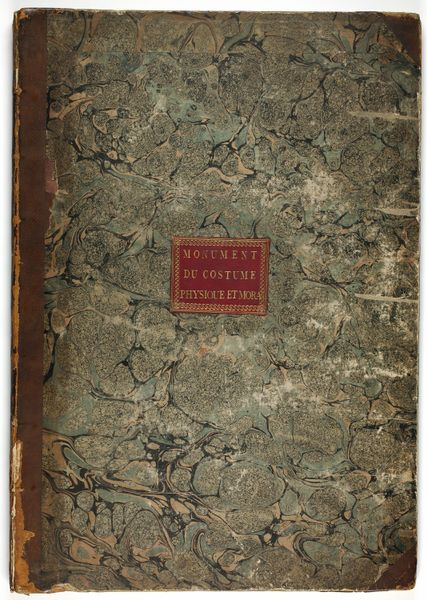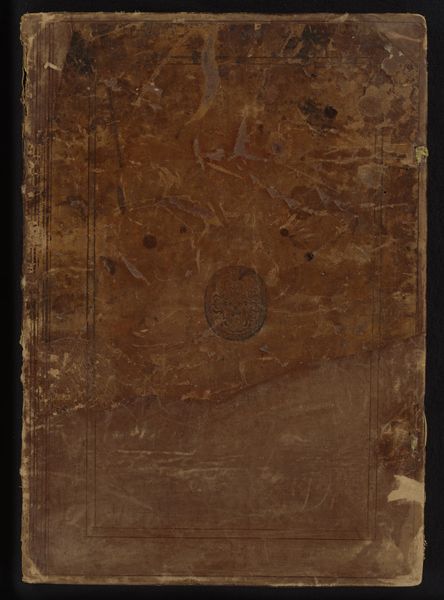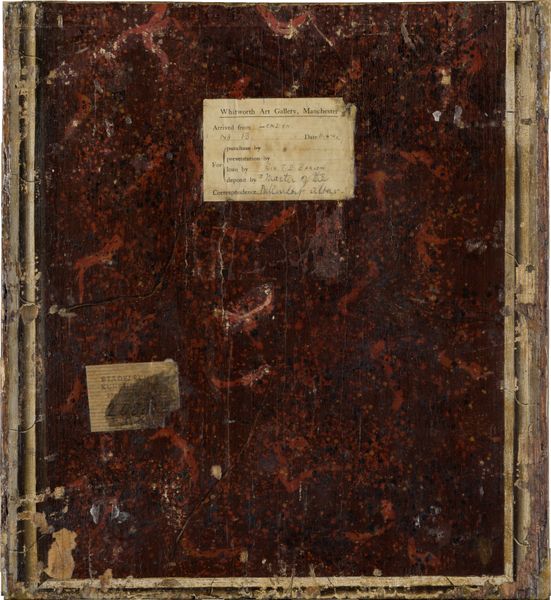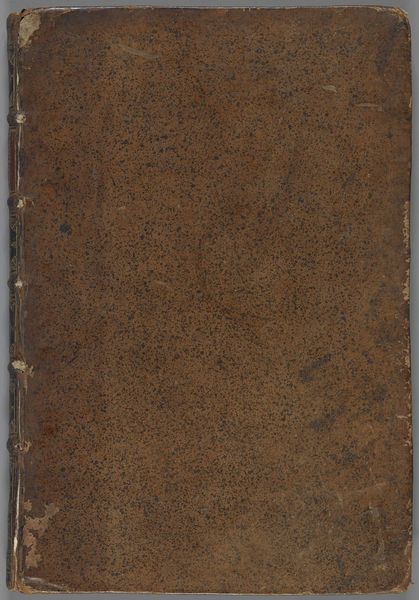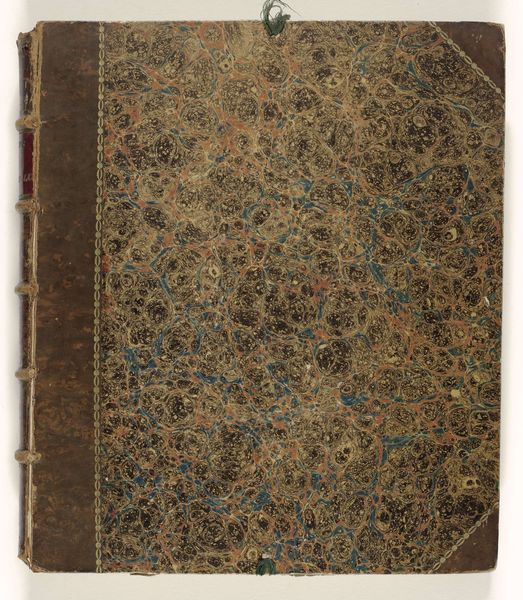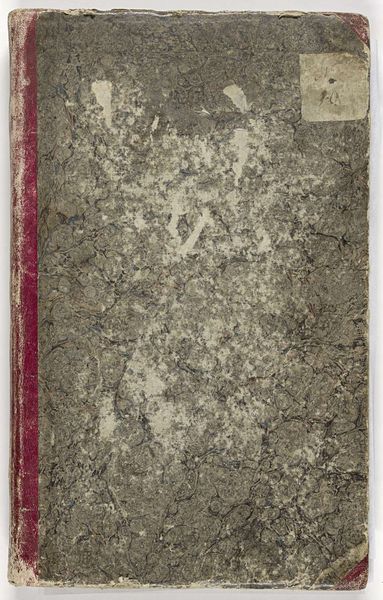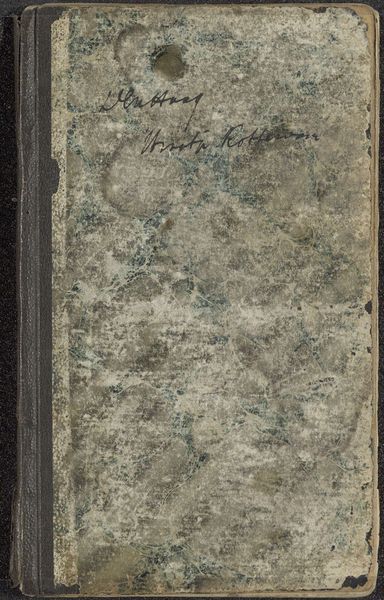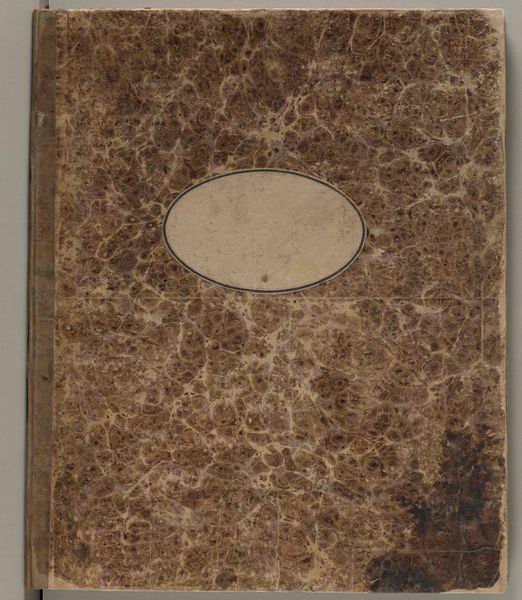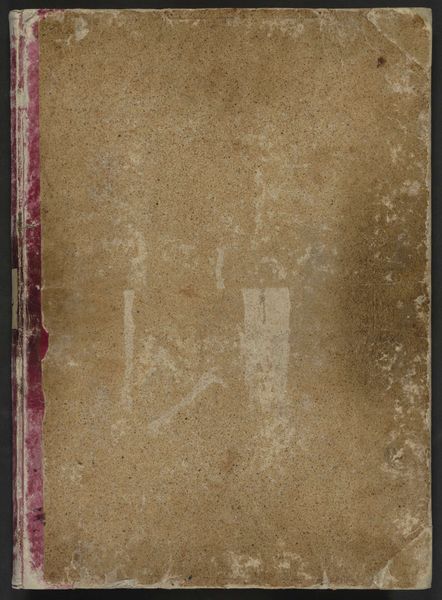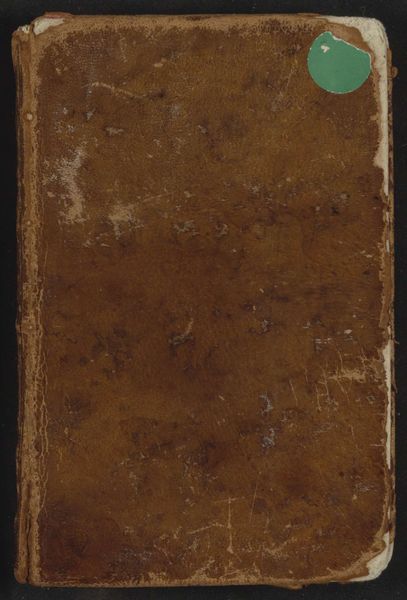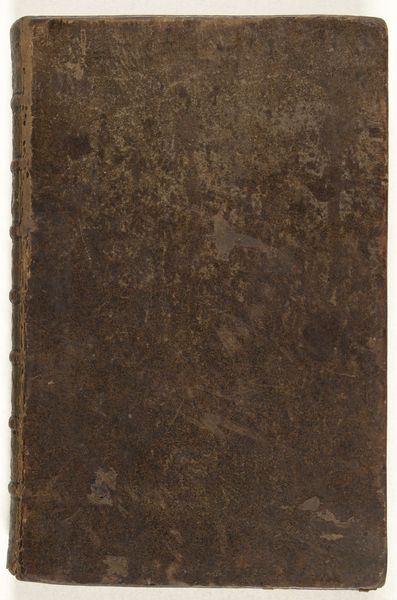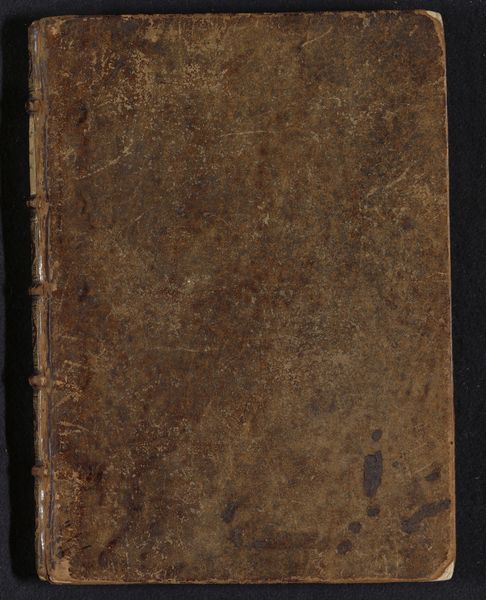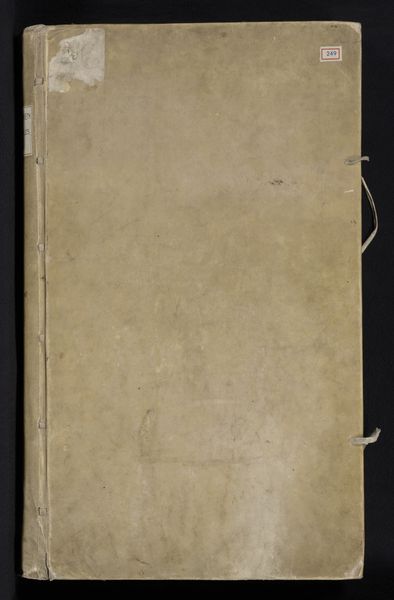
Gedichten op het zwaard waarmee Johan van Oldenbarnevelt zou zijn onthoofd 1743 - 1745
0:00
0:00
drawing, mixed-media, paper, watercolor
#
drawing
#
mixed-media
#
water colours
#
dutch-golden-age
#
paper
#
watercolor
#
coloured pencil
#
mixed media
#
watercolor
Dimensions: height 290 mm, width 228 mm, thickness 45 mm
Copyright: Rijks Museum: Open Domain
Curator: This mixed-media work on paper by Frans Greenwood, dating from 1743-1745, is entitled "Gedichten op het zwaard waarmee Johan van Oldenbarnevelt zou zijn onthoofd." It roughly translates to "Poems on the sword with which Johan van Oldenbarnevelt was supposedly beheaded". Editor: The cover seems very timeworn, almost frail, yet something about the marbled effect, in soft greens and reds, hints at contained strength. It's as if the object is burdened with a deep and perhaps dark history. Curator: Indeed, the object's aged patina underscores its historical weight. Looking at the formal elements, the composition emphasizes texture and material-- the rough paper, faded colors. Greenwood utilizes this materiality to convey the passage of time and the object's enduring presence. Editor: But it is important to consider this object, beyond just its formal presentation, as it intersects with broader socio-political and ideological questions. Oldenbarnevelt's execution in 1619 was a flashpoint in Dutch history, signaling a clash between Republicanism and the more centralized authority of the Stadtholder. The poems hint at persistent political tensions within the Dutch Republic long after Oldenbarnevelt’s death. Curator: One could further analyze the marbled pattern, a structured chaos that might represent the political turmoil of the era, a reflection on historical contingency. The application of color, in distinct washes, almost seems allegorical— a visual enactment of fading ideals. Editor: Precisely. Think also about the cultural context, the ways collective trauma manifests itself in artistic practice, and the role of artists, such as Greenwood, in challenging hegemonic narratives. These are poems bound with the instruments of political violence, offering, possibly, veiled critique. Curator: Regardless of the content of these writings, one finds it difficult not to meditate on the act of mark-making. Greenwood gives us an object both materially and symbolically linked to an enduring historical episode. Editor: Ultimately, engaging with this historical relic allows us to critically examine not only past events but also the complex mechanisms through which power, memory, and identity are constructed and contested.
Comments
No comments
Be the first to comment and join the conversation on the ultimate creative platform.
